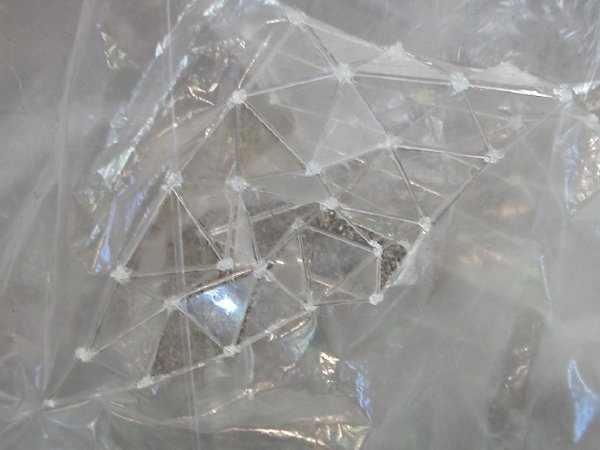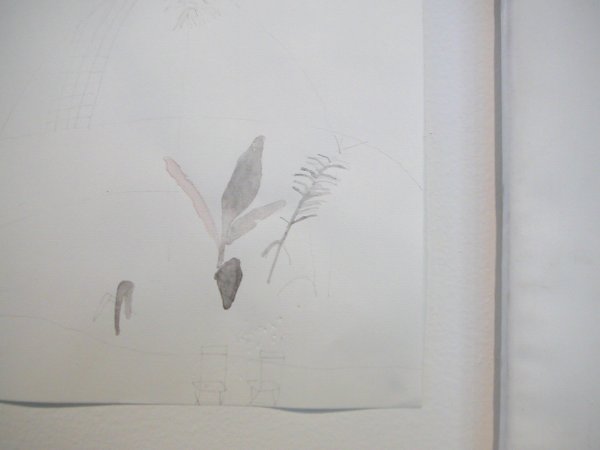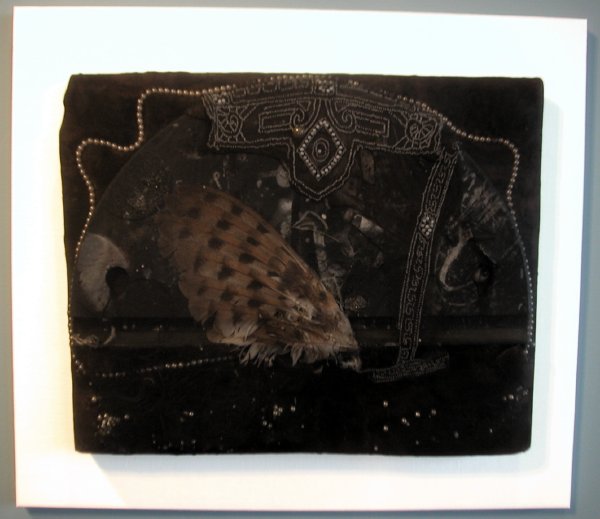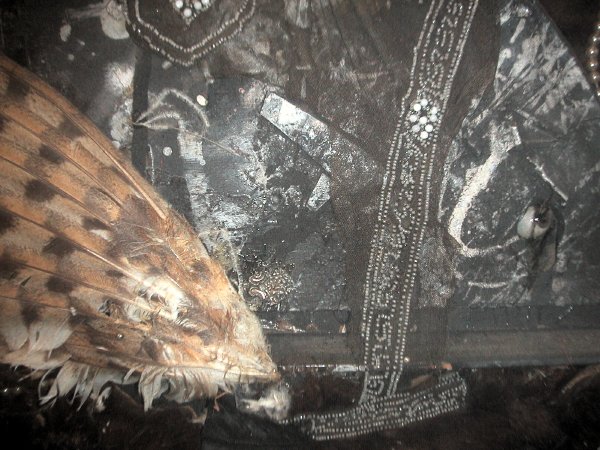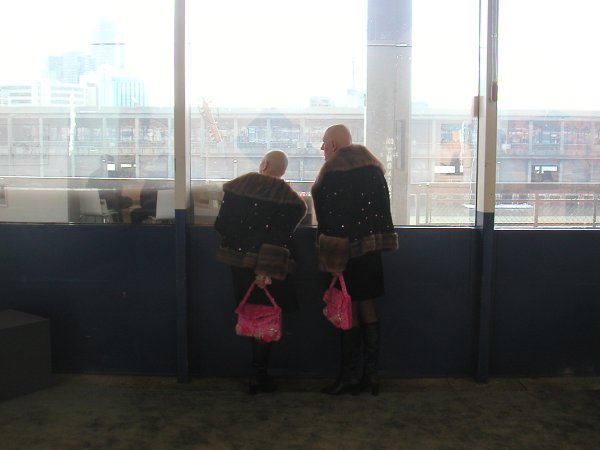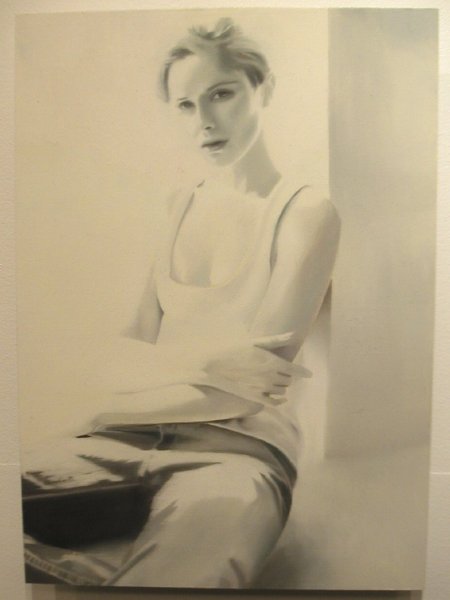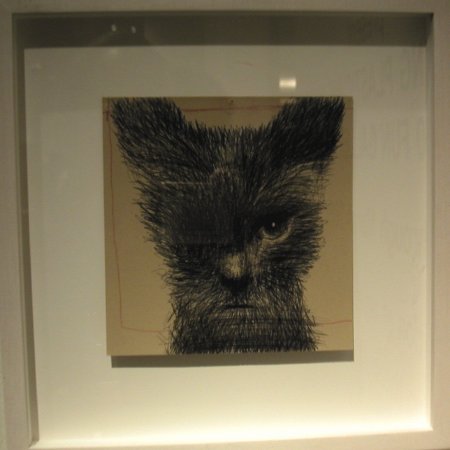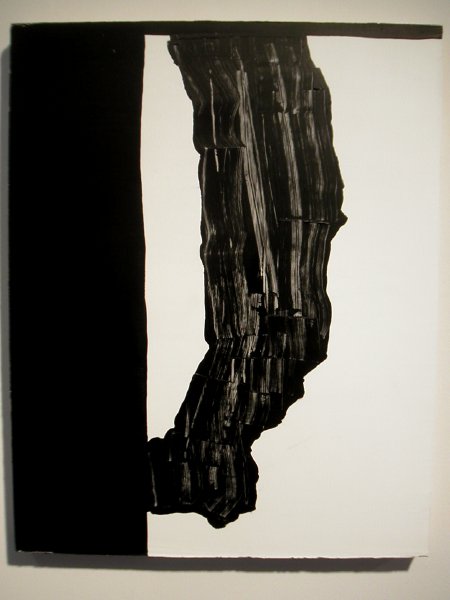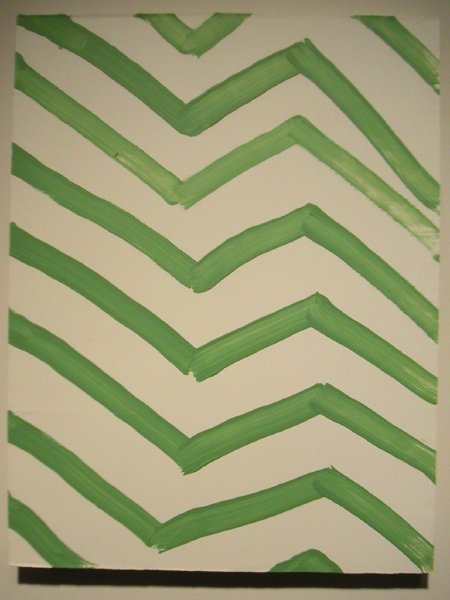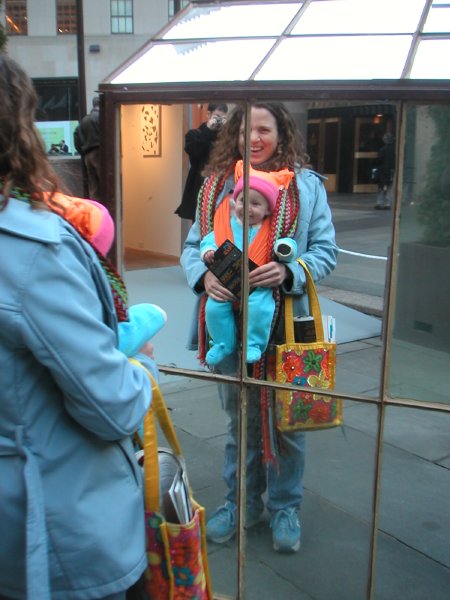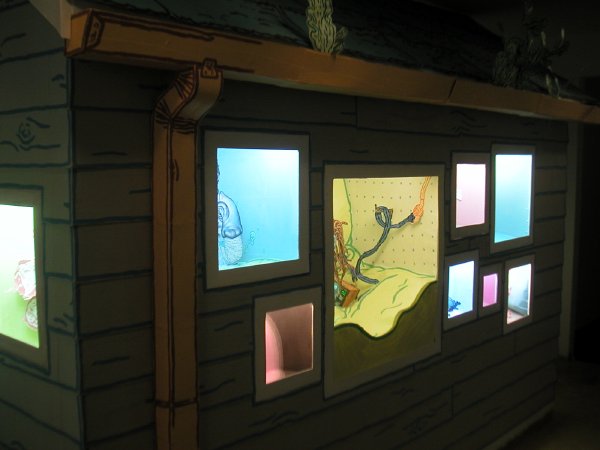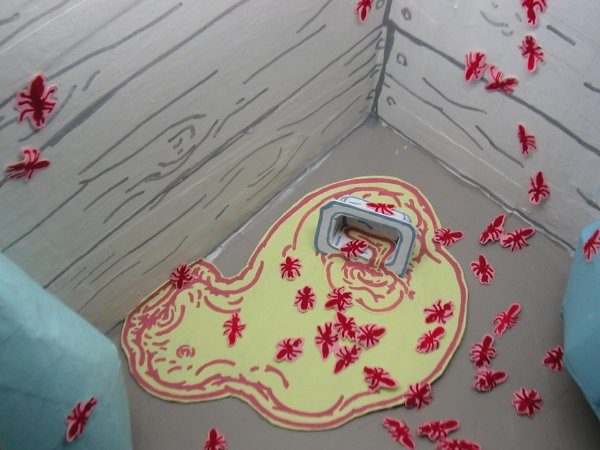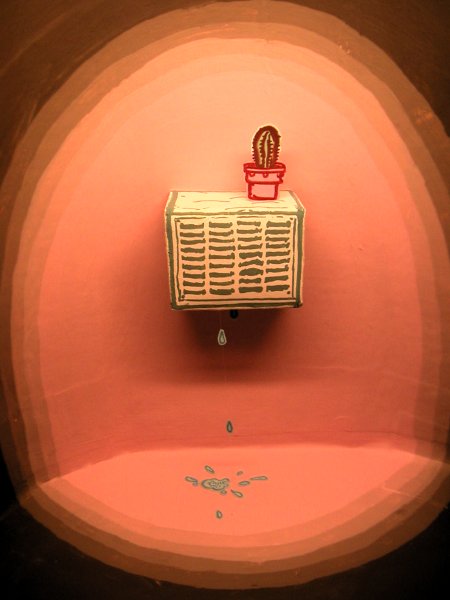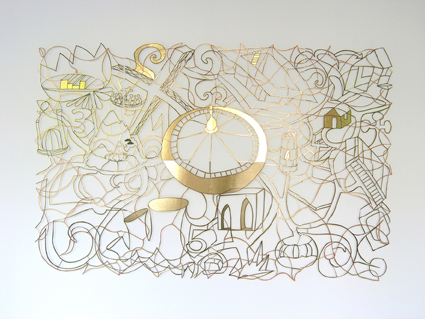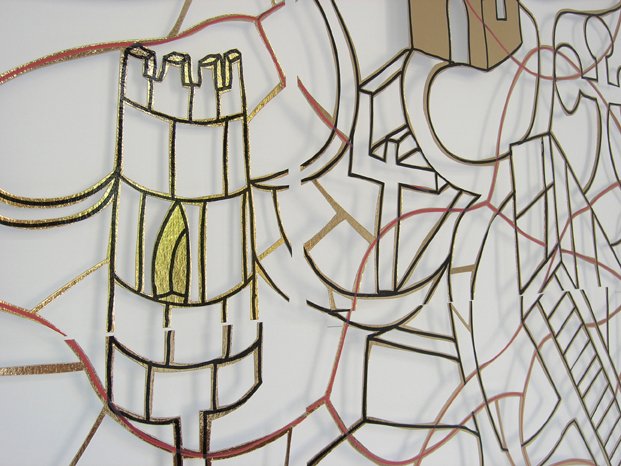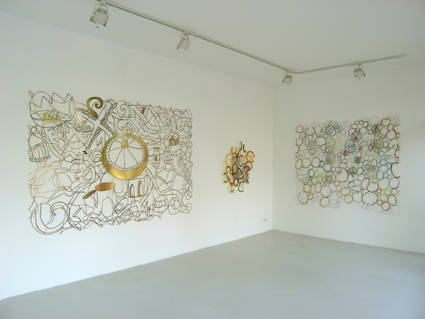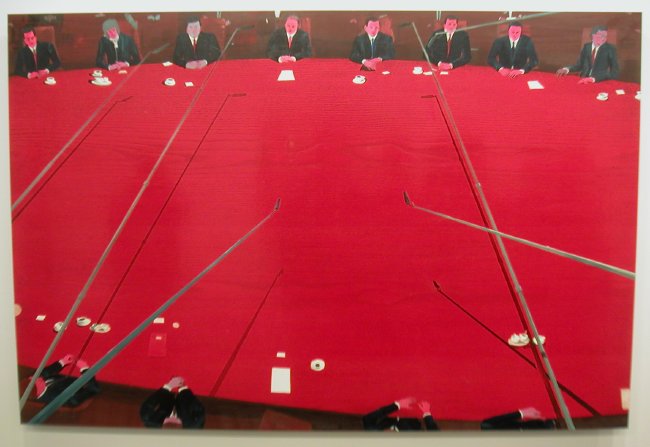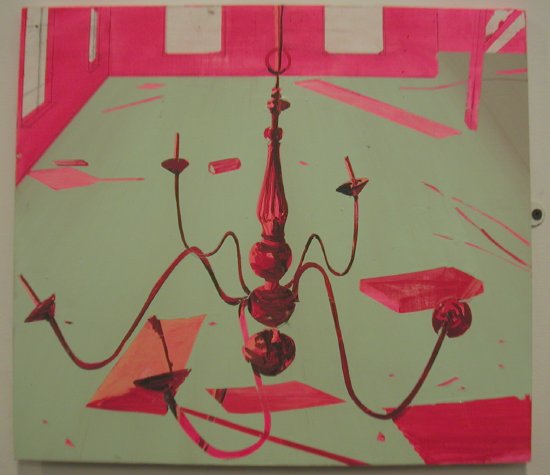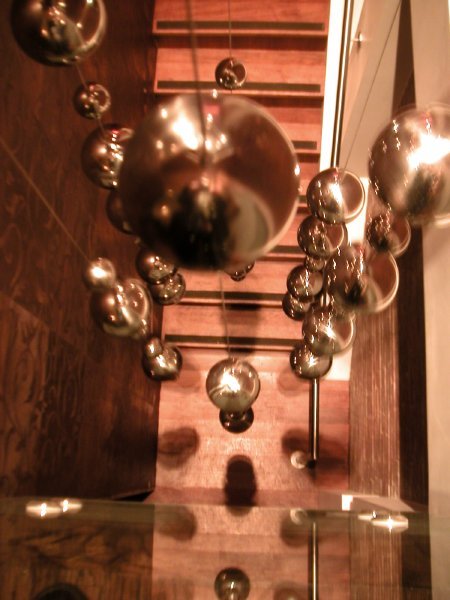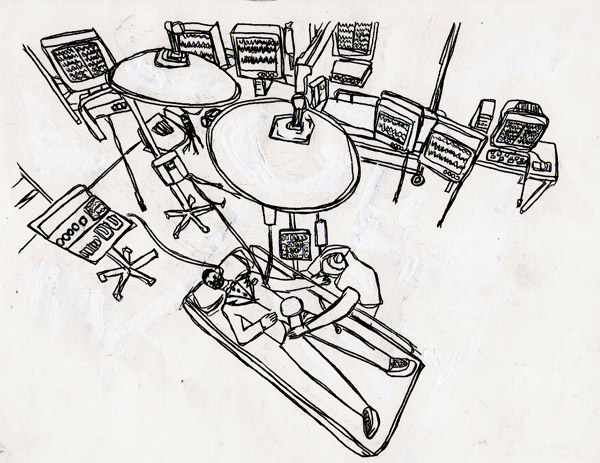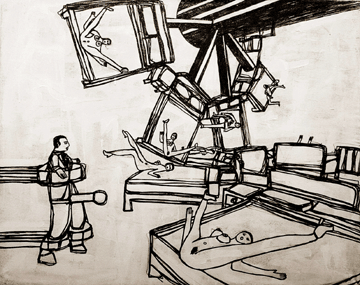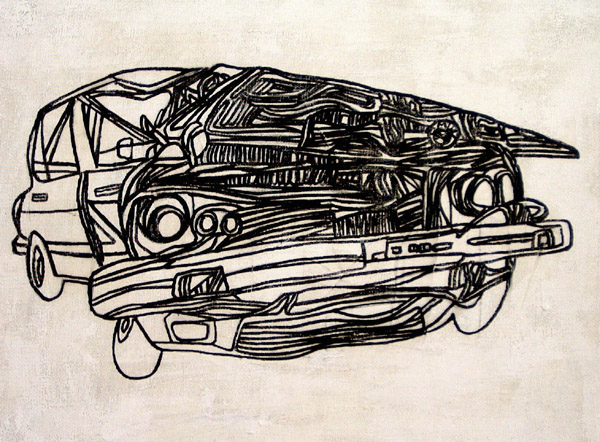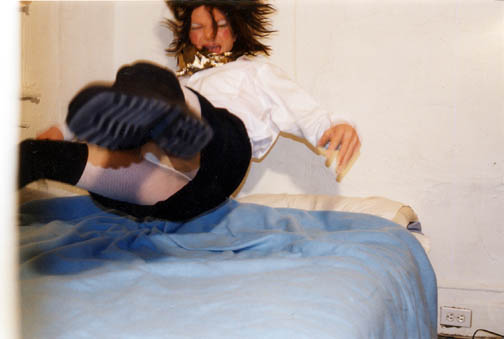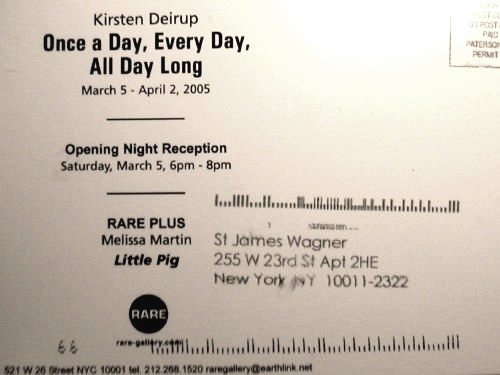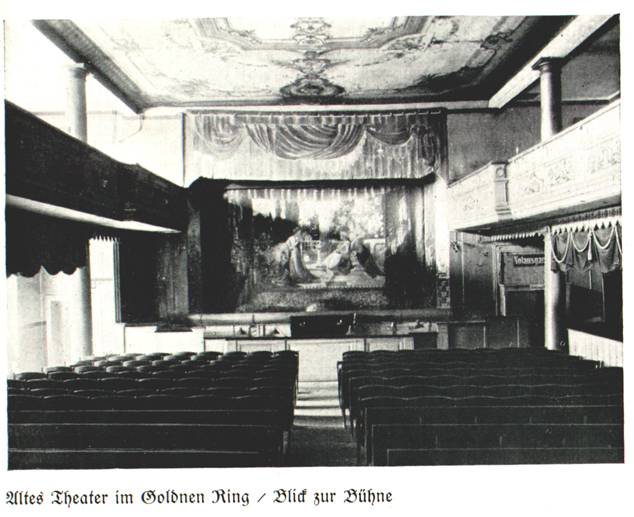
I came across the link where I found this picture while looking for images of the "Dada Baroness," Elsa von Freytag-Loringhoven [she seems to have had an early and remote connection to the theatre shown above].
Wouldn't it be wonderful if everyone had access to such a performance space in their own community? I mean wonderful for both audiences and artists!
When I saw this century-old picture of a basic, but absolutely complete theatre inside a small hotel in the provincial German town of Cottbus I thought about opera, and what fun it would be to see small productions in a space like this. Well, okay, I was also thinking of a scene in Fellini's "Amarcord." In our own experience, New York at least never seems to run out of spaces for non-musical theatre, so I thought it was fair to talk specifically about an opera house, maybe one in the west 20's for instance. The hall shown above seems to have everything audiences and artists need, just a lot less of it. There's a stage, curtains, an orchestra pit, parquet seats, boxes to see and be seen, wings, possibly a backstage area, carved or painted decoration, and even something most larger theatres don't have, daylight when the large windows don't have to be darkened.
It seems so simple. If a modest inn located in a provincial central European town could have this little jewelbox of a theatre, why can't every town in America?
We know the answer, of course, because there was a time when every small town in America, and virtually every neighborhood, did have these stages, even if their productions might be high, low or anything in between. Then cinema appeared, and live entertainment began to disappear. Later, when television entered every home in America, if not every room and now most every SUV, the audiences stopped showing up altogether.
But today, for reasons discussed regularly in the cultural media, opera, especially new creations, and including work which would not be acknowedged as opera by the old guard, is once again hot and getting hotter. This is especially true in Europe, where there are still stages in every modest-sized town, most in appropriately-sized halls, and where there is serious public funding. But people everwhere seem to like what they are seeing and hearing - if they can find it. The boundaries between high and low are becoming blurred, with neither suffering diminishment. Once again, after almost a hundred years, whether grand or chamber/loft-sized, opera isn't just for the elite, even if usually we can no longer whistle its new melodies in the streets.
I say let the Metropolitan Opera go on doing its museum thing in its big colliseum for increasingly older and wealthier audiences, but let's create our own opera houses, and produce our own brand-new, unjustly-neglected or re-created operas, and let's do it everywhere.
Although even the small halls I am imagining would need money, in the U.S. we would need only a fraction of the private or public [hah!] patronage which is thrown at television. Decades ago our government handed over the airwaves, which belong to the people, to a very few huge corporations which profit from an infinite number of other corporations which in their turn profit from selling stuff to the people who have been robbed of the patrimony of the airwaves. It's an outrageous scam.
We need to get back what is ours, meaning the tools, both theatres and airwaves, with which we might build a culture beyond mere consumerism.
More opera, less soap.
[image from Klaus Martens (scroll down)]

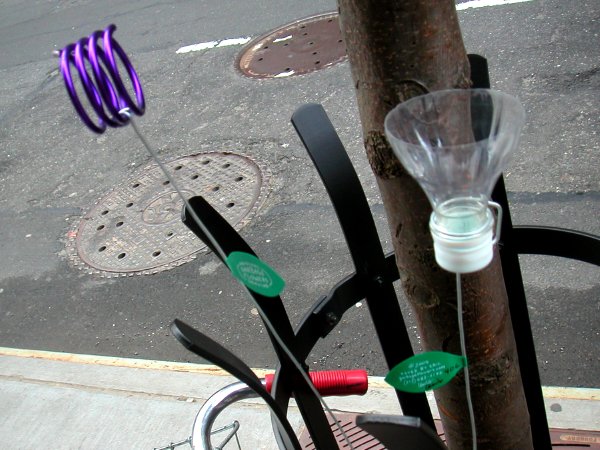
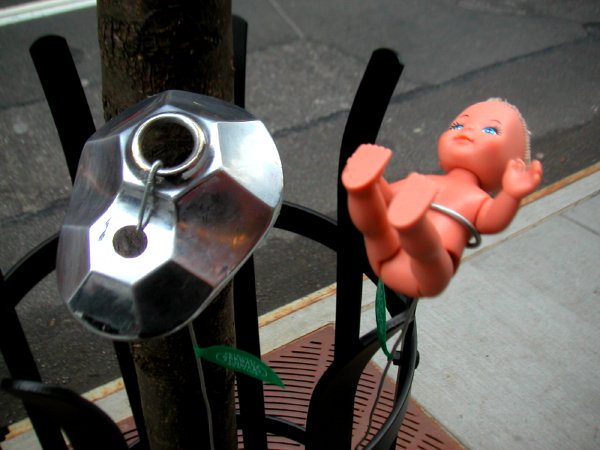
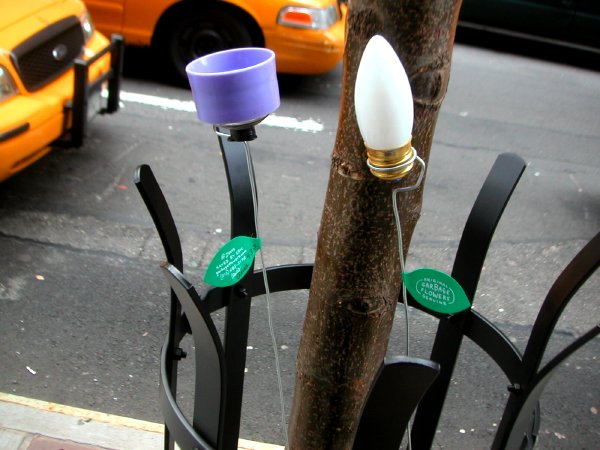
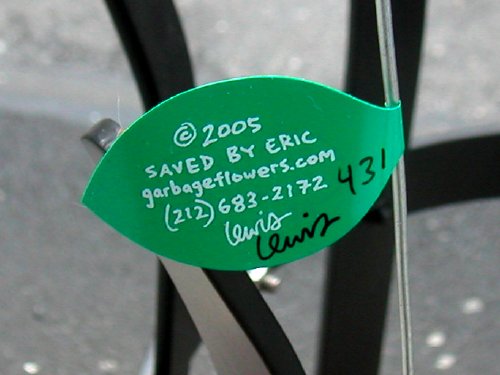
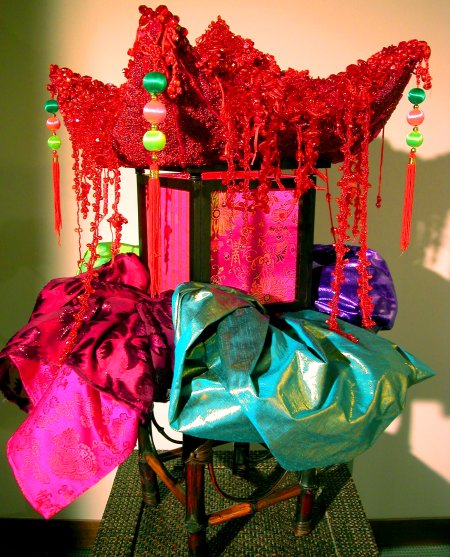

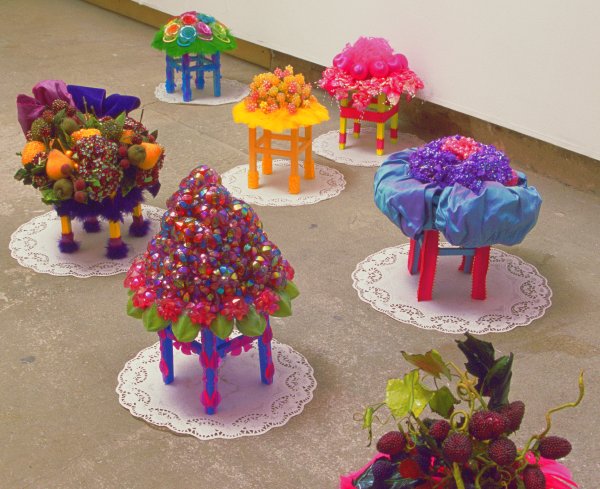
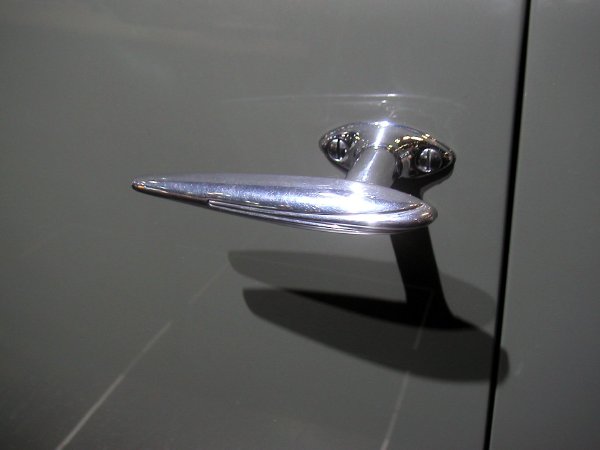
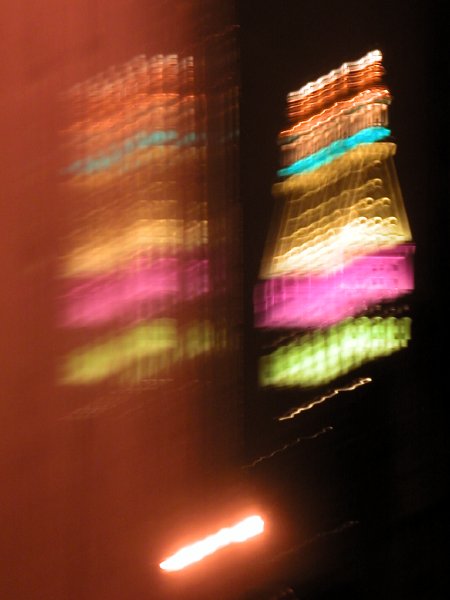
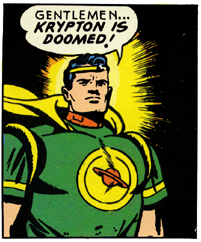

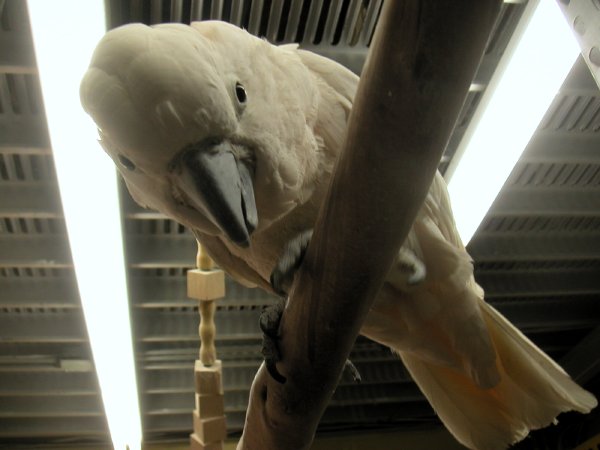
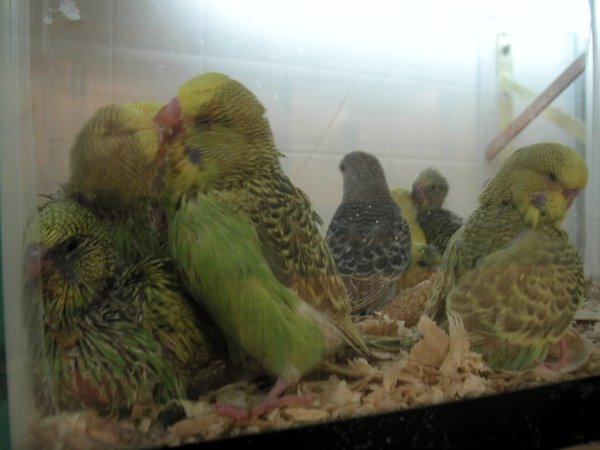
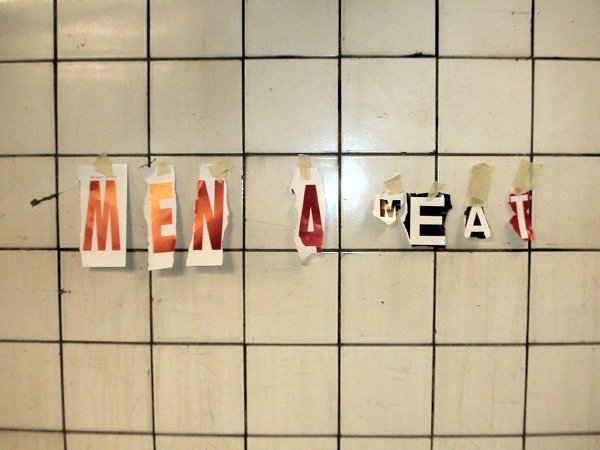
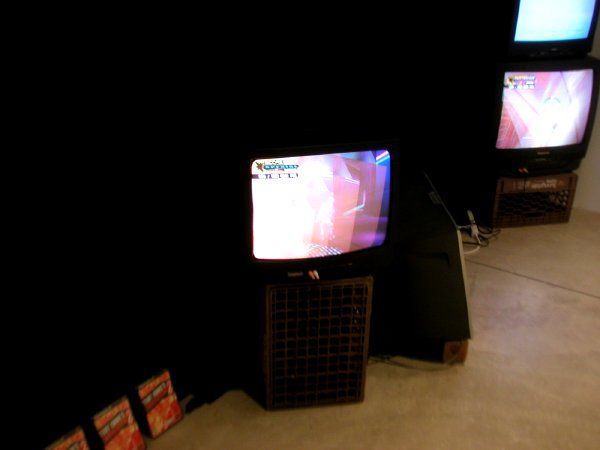
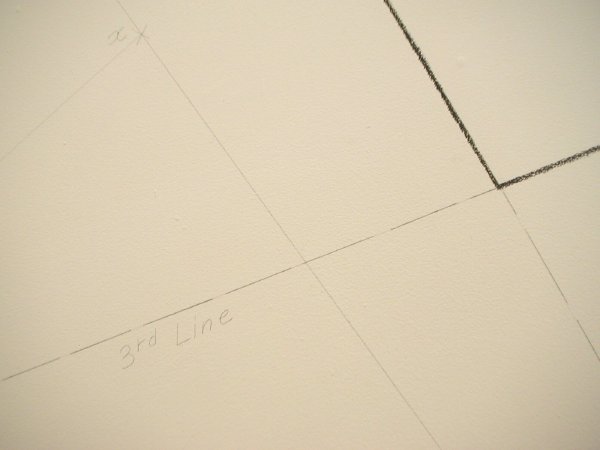
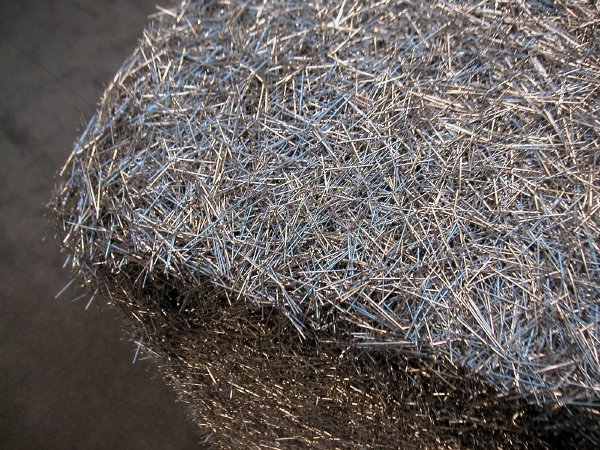
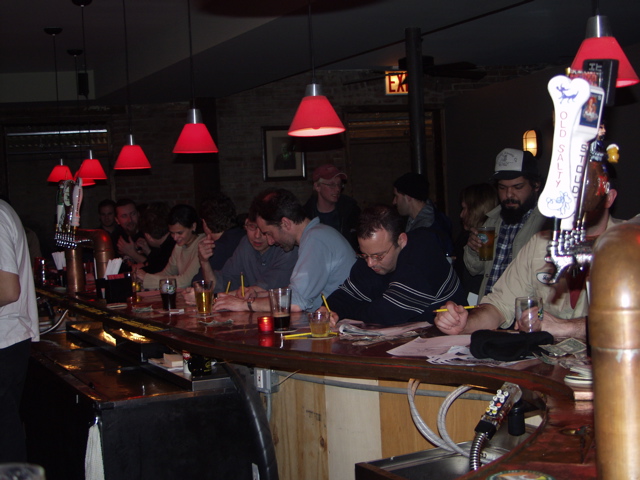
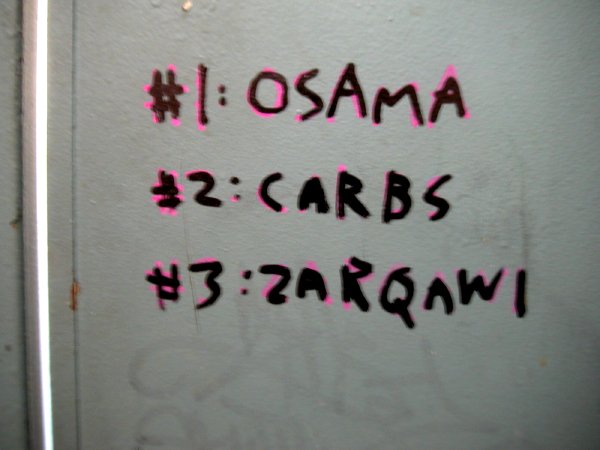
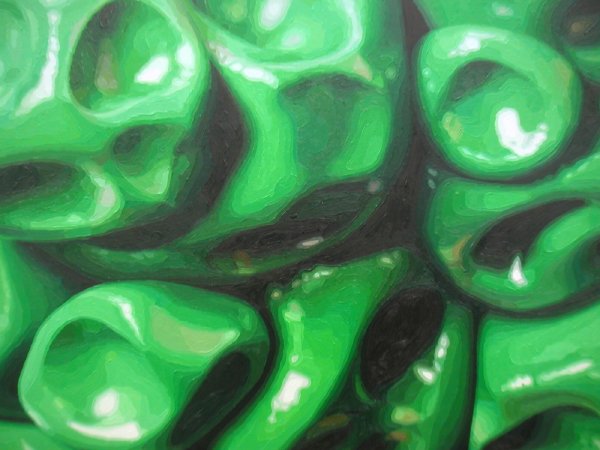
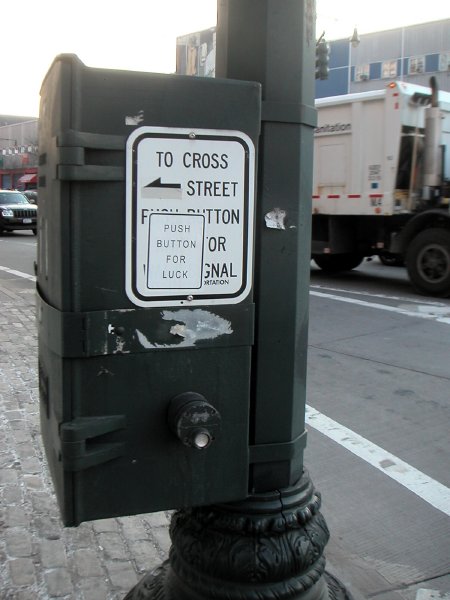
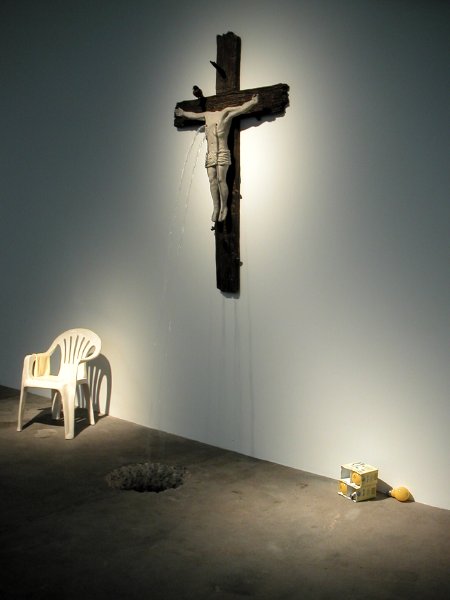
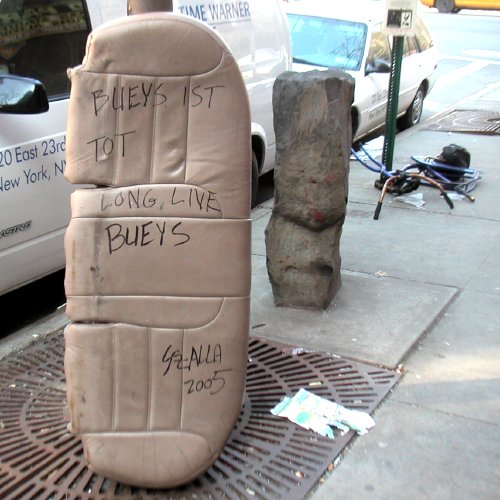
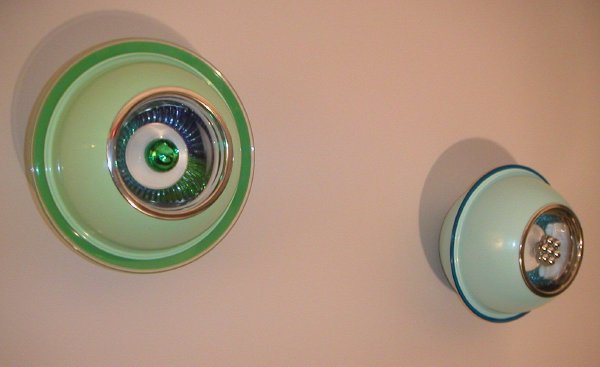
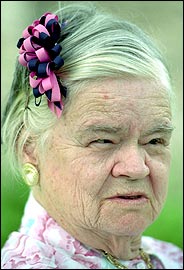
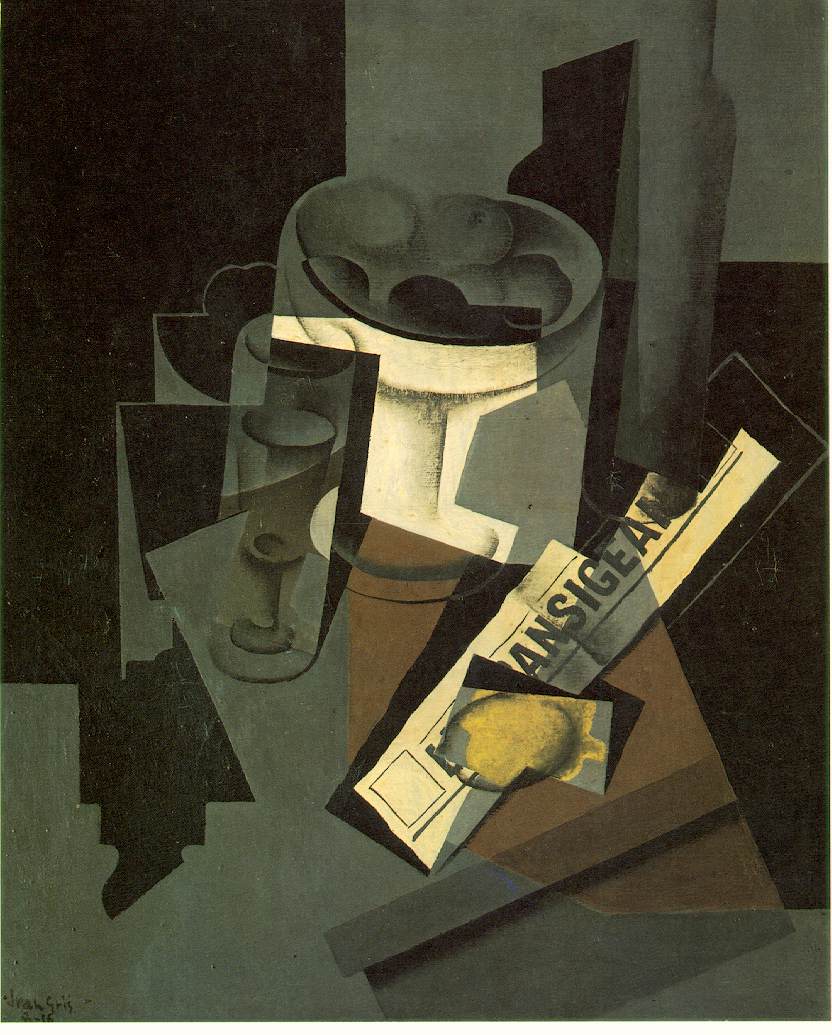
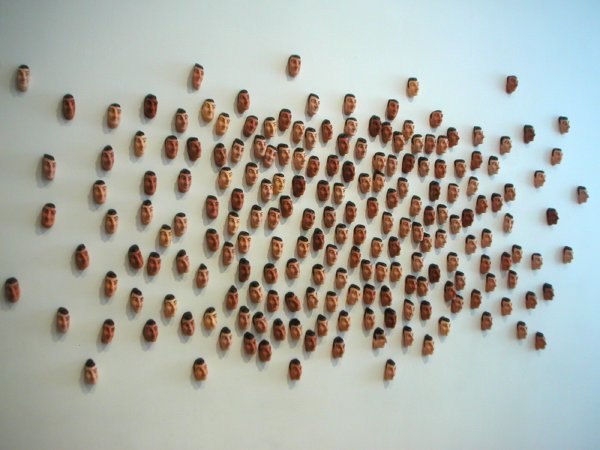
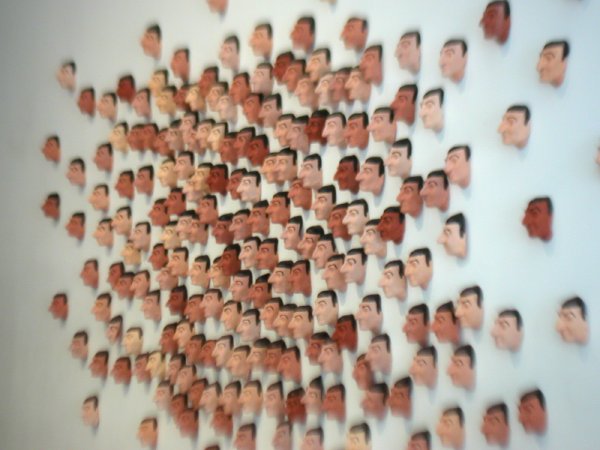
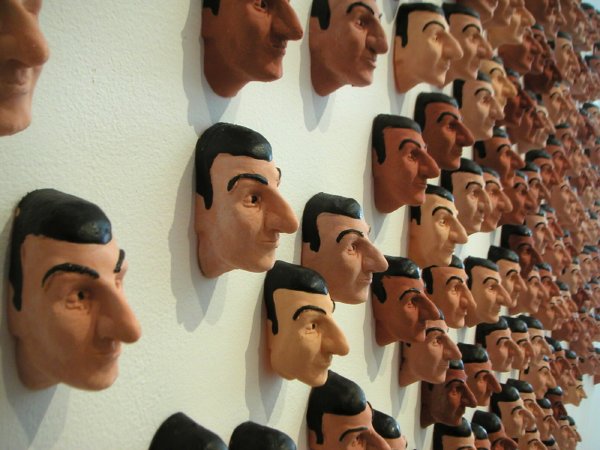

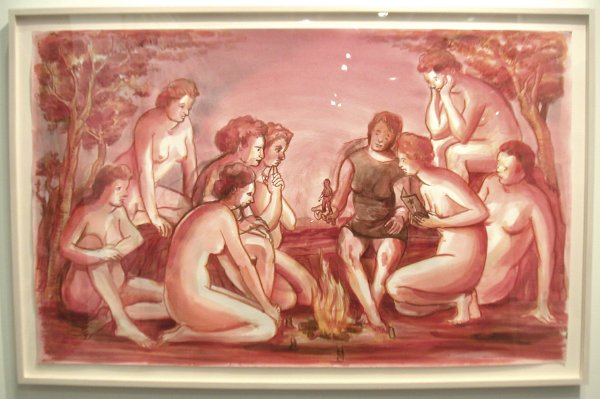
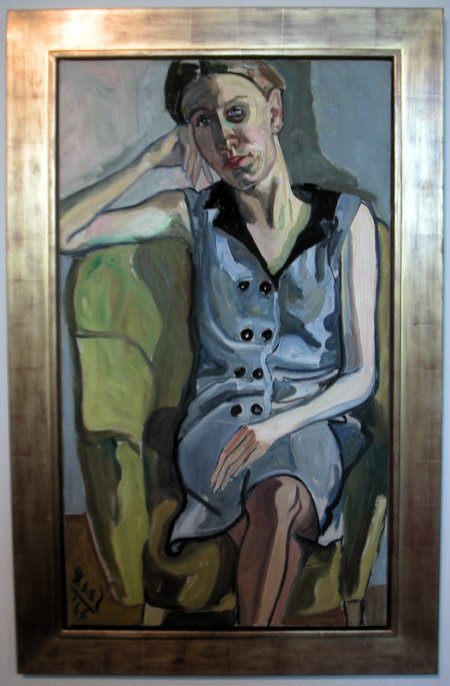
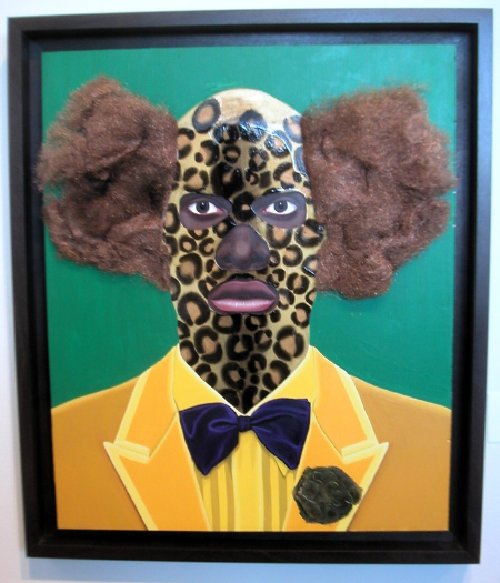
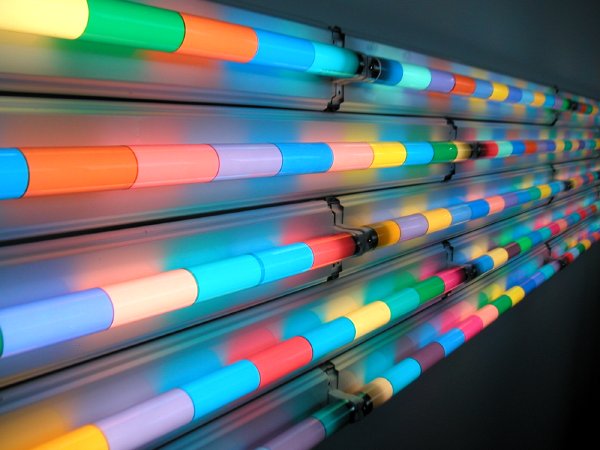

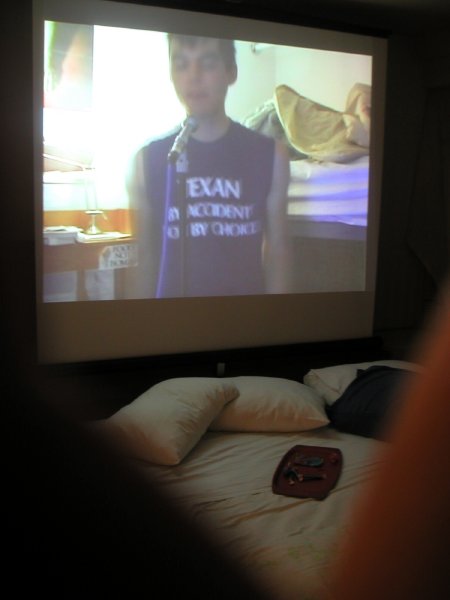
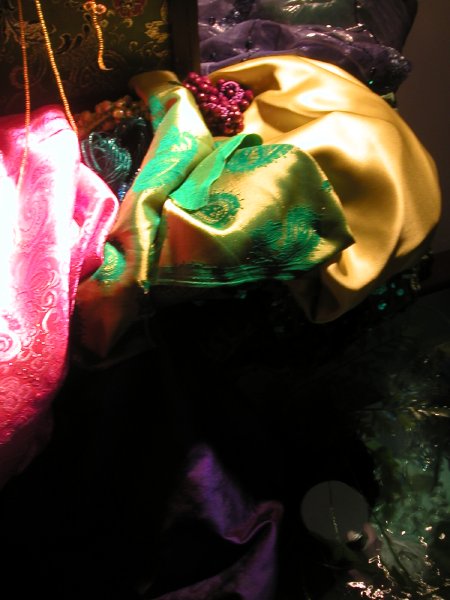
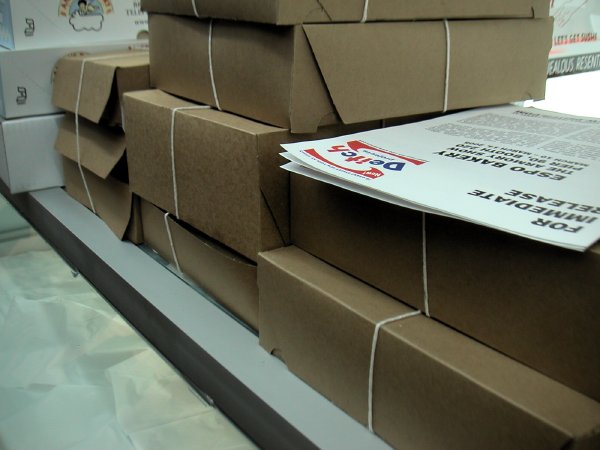
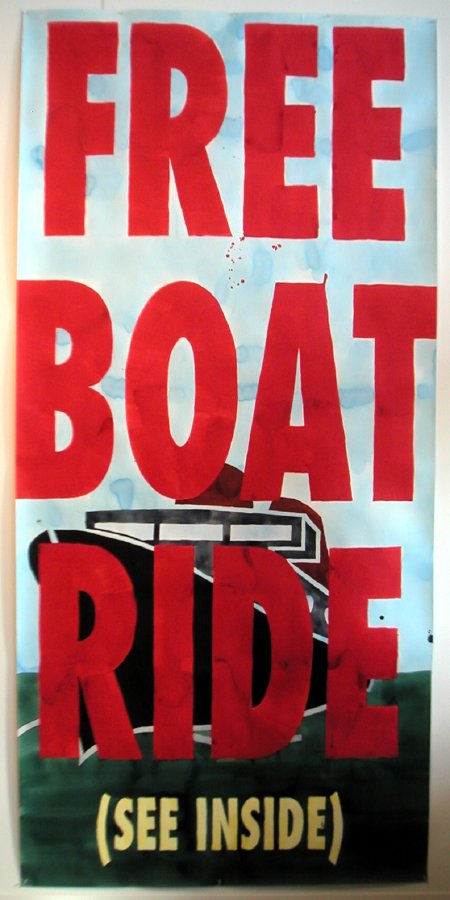
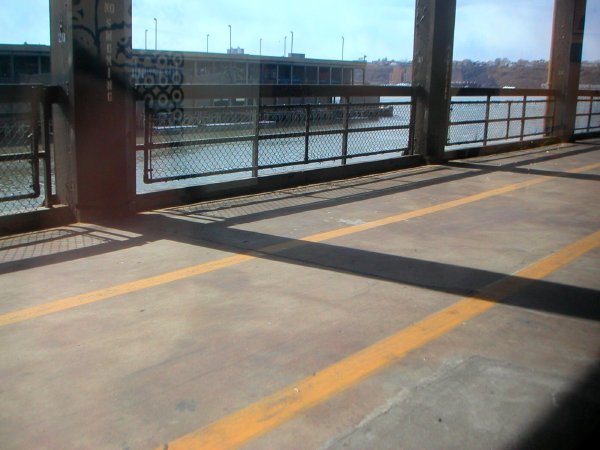
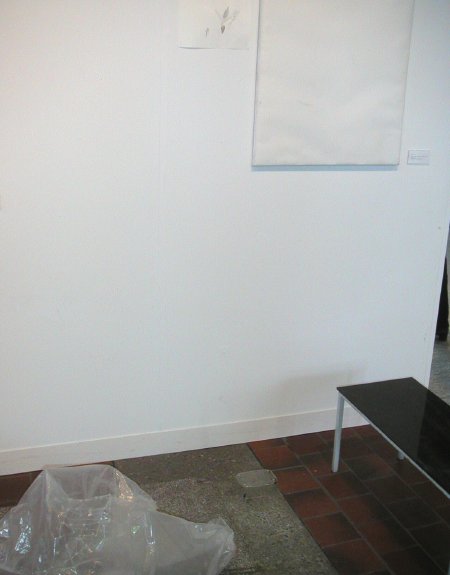 Ian Kiaer Paul Scheerart project/palm house 2005 mixed media installation dimensions variable [large detail of installation]
Ian Kiaer Paul Scheerart project/palm house 2005 mixed media installation dimensions variable [large detail of installation]